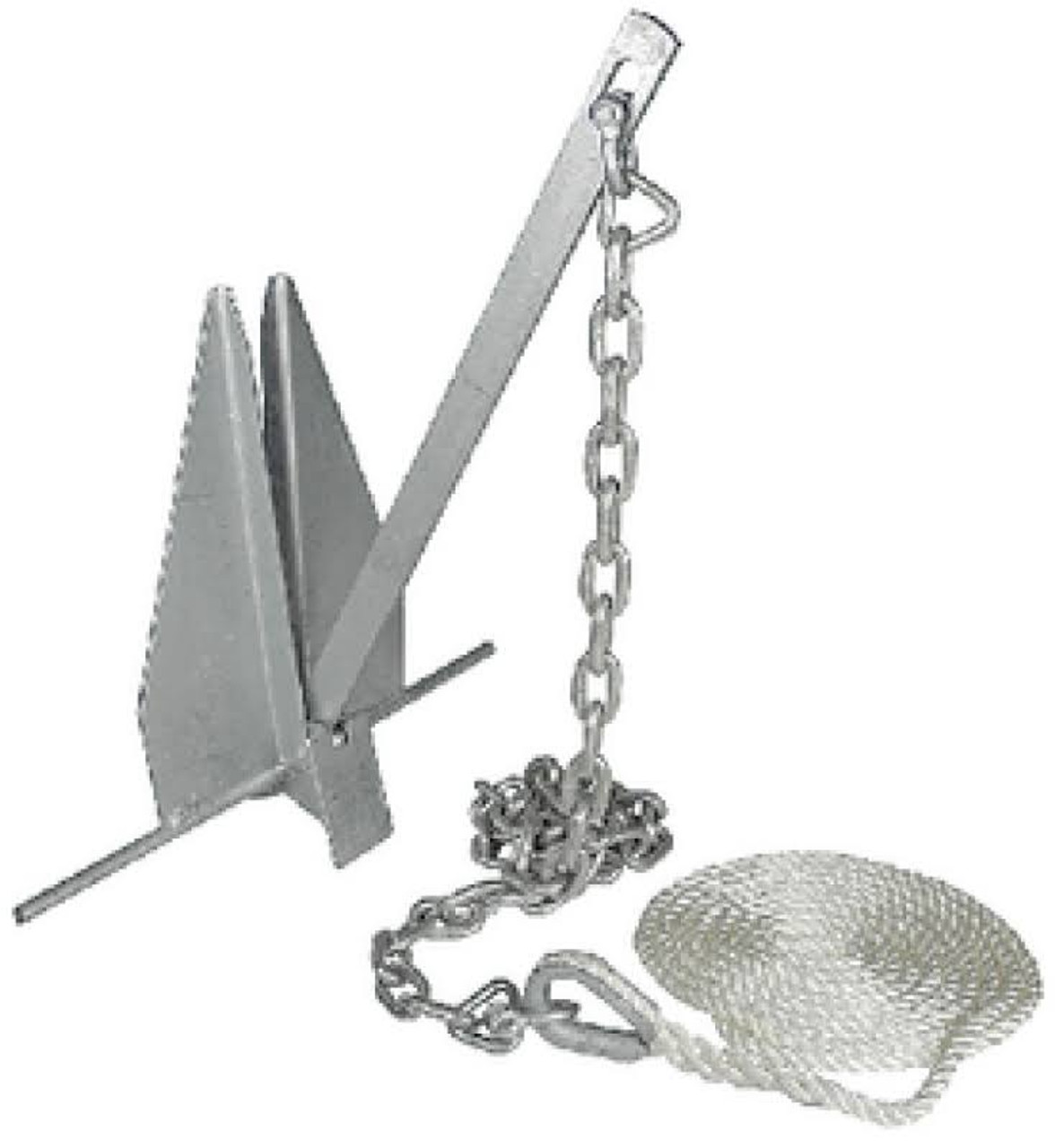What Does Fluke Style Anchor Mean?
Wiki Article
The 3-Minute Rule for Fluke Style Anchor
Table of ContentsSome Known Factual Statements About Fluke Style Anchor The Definitive Guide to Fluke Style AnchorThe Best Strategy To Use For Fluke Style AnchorThe Best Guide To Fluke Style Anchor
Claw anchors are less complicated to establish, much less most likely to foul, as well as easier to reset if they drag. Plow-style anchors are the most common type of anchor used on little to medium-sized watercrafts.They are much more effective at embeding in soft bottoms, as well as they have a greater holding power-to-weight proportion. Mushroom supports are the largest and heaviest type of anchor, as well as they are normally utilized on large boats or in deep water. They have the highest holding power of any type of type of support, however they can be testing to release as well as fetch.
Fluke anchors are usually made of top quality products such as galvanized steel as well as are construct to last. Fluke support dragging can be an irritating problem for seafarers.
This gadget attaches to the anchor line and also prevents it from twisting. An additional option is to use a longer anchor line.
Top Guidelines Of Fluke Style Anchor
Check the support itself to see if it is harmed or if the flukes are not dug in correctly. If so, try resetting the anchor. Last but not least, if all else fails, you can try relocating the boat to a different area.This design permits a proper setting regardless of the angle the support lands. When selecting your next anchor visit us right here at Wholesale Marine. We provide a company foundation of seasoned customer support representatives to aid you as you peruse our items. Our cost match assurance, same-day delivery, and cost-free shipping for carts over $99 are all cherries in addition to our high-quality goods.
By Tom Problem, Last upgraded: 5/28/2020 Support rodes consist of a size of chain, rope or a combination of rope and chain that connects an anchor to a watercraft. The rope portion of support rodes normally contains nylon three-strand, 12-strand or double-braid line. Nylon is the product of selection, due to the fact that it is flexible and able to take in the shock loads came across when securing - Fluke Style Anchor.
Many small watercrafts make use of anchor rodes made totally of three-strand nylon line. This is due to the fact that all-rope rodes are light-weight, economical and also simpler to stow than rope-chain or all-chain rodes. All-rope rodes can be fairly solid, they do not have the chafe resistance of chain and also are as a result not appropriate for securing near reefs, among rocks or in anchorages with lots of surge and wave activity.
Getting The Fluke Style Anchor To Work

This decreases the demand for long range (other than in superficial water) since the chain is hefty as well as exists on all-time low until severe problems are encountered, when more scope may be needed. Because chain has extremely little flexibility, treatment needs to be taken to prevent the chain from ending up being "bar tight" in high winds by making use of a snubber constructed from nylon line.
It is moderately light (as little as 65 lb.) and significantly strong. Grade 43, called G4 or HT; made from high-carbon steel. G4 is the favored chain for securing or windlass applications, and has twice the workload of BBB chain, so you can make use of a smaller size with the exact same strength.
BBB or "Three-way B" has an uniform pitch short link, as well as functions well on windlass gypsies. content BBB used to be one of the most popular kind for windlass styles of the past, yet has been replaced by G4. Proof Coil does not have a consistent pitch as well as does not deal with support windlasses.
Fluke Style Anchor Things To Know Before You Get This
Little galvanized irons link the support to the size of chain, and also attach the chain to the thimble on the anchor line. Fluke Style Anchor. Keep in mind to use the "next measure" in shackles; a size of 1/4" chain would certainly be matched to a 5/16" bind. This system, with a lengthy size of three-strand nylon line, a moderate length of chain as well as an effectively sized anchor will please the demands of most of sailors, with watercrafts up to the 30' dimension range.
High-strength chain like these allows you to drop a dimension which reduces the chain's weight by about 30%, while achieving the same workload capability as well as utmost strength. Matching support chain to a particular vessel can be tough, since the windage of the vessel is possibly the crucial choice aspect, as well as windage is hard to identify.
Report this wiki page